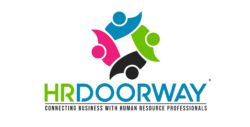The field of human resources (HR) – planning, staffing, rewarding and developing talent for today’s thriving businesses – is evolving. In HR topics such as hiring, hybrid and remote work, recruiting, diversity, equity and inclusion (DEI) and employee engagement, the change has been so rapid that many HR professionals have had to re-learn them as business adapts. With this in mind, we’ve compiled a list of 8 HR trends we think you’ll likely see in 2023. 9 minute read
1. Increased Focus on Diversity, Equity and Inclusion
While less a trend than a much-needed overhaul of the way businesses address representation and inclusion in the in the workplace, corporate America’s larger scale commitment to DEI involves taking measures to remove unconscious bias and creating a culture where people from all ethnic and cultural backgrounds with varying physical abilities, gender identities and sexual orientation, can participate equally and have an equal opportunity for success.
These commitments to change also play a role in employee satisfaction. Kenston Henderson Sr., Chief Empowerment Officer of Live With Lyfe, LLC, describes DEI as the thread that must flow through organizations if they are to experience long-term retention of current and prospective employees.
In addition, industry data shows that companies with highly diverse workforces are more productive, with up to 19% higher revenues than less diverse companies. Several human resource trends related to DEI are expected to continue in 2023, including redefined hiring strategies, education initiatives and analytics and accountability.
2. Continuation of Hybrid and Remote Work
Expect remote work to be very much a part of the employee experience – and a trending HR topic in 2023 – as many employers continue to offer the flexibility of on-site, hybrid and remote work options. Many employees might find they are happier or more productive working at home rather than in a traditional 9-5 in-office structure, and may seek out roles that best fit their schedules.
In some instances, HR leaders may be realizing that one-size-fits-all policies no longer work, and that trusting employees to decide where, when and how the work gets done could be the way forward in regard to increasing productivity, fostering wellness and employee retention.
Screening, interviewing and onboarding new employees will likely continue to be done via online portals and cloud-based systems as HR managers adapt to a workforce that may not be physically present in the office.
3. Boosting Employee Skills
According to the Society for Human Resource Management (SHRM), hiring managers consider soft skills to carry more weight in the hiring process than in previous years. Skills like empathy, emotional intelligence, mindfulness, adaptability, self-motivation and resilience, are coming into their own compared with hard workforce skills like technical capabilities.
When working remotely, communication and people skills can become even more important. Managers and HR professionals will need to become more emotionally intelligent in order to stay in tune with their staff, understand their challenges and help them through difficulties.
Employee upskilling and reskilling – or providing existing staff with training and development to enhance their current skillsets or learn new ones – have been described as a way to “future-proof” an organization, according to a recent post on the LinkedIn Talent Blog. Upskilling is one of the HR trends to watch out for because it is a sustainable approach to workforce development, helps retain quality employees, boosts morale and can help cut costs associated with recruiting and onboarding new hires.
Reskilling can also help businesses continue to be competitive and remain productive. When reskilling, employees develop skills to help them grow in their current position or take on a new job function within their organization, thereby advancing their careers while continuing to serve the organization’s rapidly changing needs.
4. Wellness-Focused Employee Benefits
In 2023, HR topics like employee wellness will be another step in the right direction as leaders in the field help create and maintain employee assistance programs that incentivize employees to engage in fitness, regular exercise, stress reduction and other contributors to overall wellness.
Dr. Steven Aldana, CEO of employee wellness solutions company WellSteps, says office managers and supervisors must prioritize the wellness of their employees to boost productivity and address the elements of an office workspace that negatively impact employee wellness.
Components of an effective employee wellness program might include:
- Exercise and physical training opportunities
- Nutrition coaching and advice
- Mental health support
- Stress management education
- Office environment enhancement
A 2017 study from the University of California Riverside suggests that corporate wellness programs can boost employee productivity and satisfaction by empowering them to take care of their health in a way that fits their busy lives.
As existing and new employees expect high-quality healthcare, wellness and retirement plans for themselves and their families, we can likely expect employers to continue providing them in 2023. This could also expand to affordable childcare for parents who are returning to the office. In 2023, look for employers who are offering flexible childcare benefits, providing critical help to parents while potentially giving themselves a competitive edge in hiring, according to SHRM.
Also, keep an eye out for outside-the-box ideas in paid time off (PTO) policies in 2023. Some employers are responding to employee requests to expand PTO to include an extra day off to visit the doctor, a paid holiday (that doesn’t count against vacation time) for an employee to celebrate his or her birthday and time off to attend children’s events.
5. Improvements in Company Culture and Engagement
Another HR trend likely to continue in 2023 is organizations moving toward a people-first culture and making that culture a priority, not just a talking point.
Despite advances in technology, HR teams should remain aware of the human element to what they do, continuing to be welcoming and empathetic, and encouraging employees to come forward with their concerns. Senior management must also meet employees’ needs with understanding and compassion, or risk losing them as they pursue opportunities elsewhere, leaving vacancies that could be hard to fill.
Trends in employee performance and development will continue to emerge in 2023. As the way we work continues to change, methods of evaluating employee performance will also have to evolve. A recent survey conducted by Eagle Hill Consulting found that about half of U.S. workers report receiving feedback semi-annually or annually, yet, 63% of workers want more immediate, “in the moment” feedback on their work performance.
Regular feedback and recognition can help build relationships with employees and ensure they feel heard and appreciated for their contributions. When employees feel valued, it helps create a strong culture of belonging within an organization.
In addition, look for outcome-focused goals to be a cornerstone of employee performance evaluation moving forward. While working remotely, employees are likely to manage workflows differently. In some instances, outcome, rather than output, will be a preferred measure of employee performance and perhaps a more realistic goal-setting metric.
Effective collaboration and culture development can be a challenge for organizations of any size and type. As employers work to bring their people together when many of them may be remote – in different time zones or even on different continents – culture and collaboration will continue to be on managers and HR’s radar. The rise in conferencing and cloud technology tools has enabled employees to get their work done at any time, from anywhere, but HR professionals should keep an eye out for “silos” to form in the work environment, resulting in people not connecting as much as they could.
6. Embracing New Technology
New technologies have dramatically changed the way businesses manage human capital. What’s powering this trend into 2023? Millennials. A generation that has grown up with internet access and mobile devices, millennials now make up a larger percentage of staff at many organizations, according to business communication app company Connecteam. Advancements in technology itself are another factor.
Emerging technologies like Artificial Intelligence (AI), Machine Learning and RPA (Robotic Process Automation) are also playing a role in HR practices. Artificial intelligence algorithms, for example, can assist with tasks from recruitment to employee engagement to people analytics. Cloud-based HR technologies will also continue to enable an increasingly remote, mobile and “gig economy” workforce distributed across the globe.
Considering the amount of sensitive employee information they handle, HR departments will continue to play an important role in cybersecurity in 2023. HR professionals can also influence the behaviors of employees and, in collaboration with their IT counterparts, should continue to influence good cyber-hygiene and enforce effective cybersecurity policies to defend against threats like phishing and ransomware.
Employee management apps and automation are gaining momentum as well. These include a new batch of cloud-based, self-service tools that give employees better control over their data. Cloud-based HR has brought numerous benefits to the industry – allowing HR to access employee data in real time to make decisions accordingly and empowering employees by giving them anytime access to their information.
7. Combatting Quiet Quitting
During the latter half of 2022 something called “quiet quitting” has been having a moment, and that moment may linger into 2023. Widely covered in the media, this HR trend is categorized as employees choosing not to go “above and beyond” in the performance of their jobs. Examples of this might include refusing to answer emails during evenings or weekends, or passing over assignments that fall outside their core duties.
This “quitting your job without actually quitting your job” is really about people taking steps to improve their work-life balance by “quitting” the parts of it they find to be overwhelming or unsatisfying. HR leaders will have to be both thoughtful and proactive, using the principles of a people-first culture as described above, to improve the employee experience in ways that will mitigate this phenomenon. Some measures for them to consider when combating quiet quitting include improving their understanding of employee opinions, boosting morale, assessing the company’s culture of working outside “normal” work hours, reducing unproductive meetings and offering career coaching resources.
8. Focus on Retention
During the past two years, record numbers of American workers have left their jobs in an event that’s come to be known as The Great Resignation. According to data from the U.S. Bureau of Labor Statistics, in the period from January through November 2021, more than 43 million people quit their jobs, as opposed to being laid off or by leaving by other means. Since quitting is generally a voluntary separation initiated by the employee, this number can serve as a measure of workers’ willingness or ability to leave jobs.
Effective HR professionals will need to be focused on employee retention in 2023, looking inward to determine what motivates employees and identifying and nurturing talent to promote from within their organizations.
Regardless of their companies’ employee turnover rates, HR teams will need a strong understanding of what motivates employees if they wish to keep them. Employee motivators will vary according to which stage of life the employee happens to be in, but some motivators may include career growth opportunities, connection or sense of community, compensation and benefits, manageable workload and DEI.
The Takeaway: 8 HR Trends You’ll Likely See in 2023
HR Trends like DEI, hybrid and remote work, employee skills management, employee benefits, company culture, engagement, technology, quiet quitting and focus on retention may represent significant challenges for HR professionals in 2023. Regardless of how these challenges are brought on, it’s safe to say that HR professionals will have to be on top of their games.
- DeVry University

